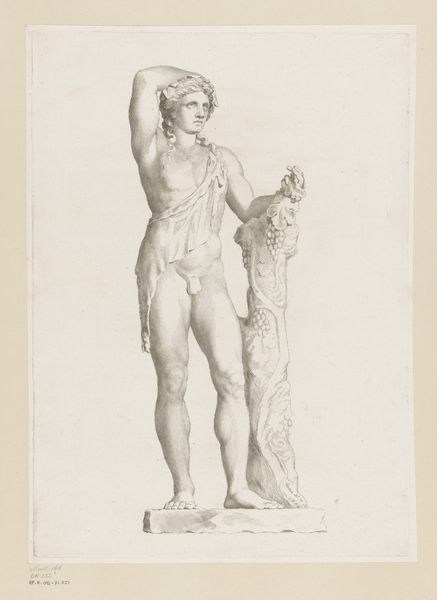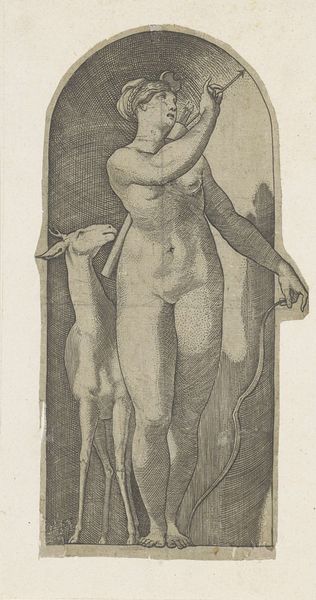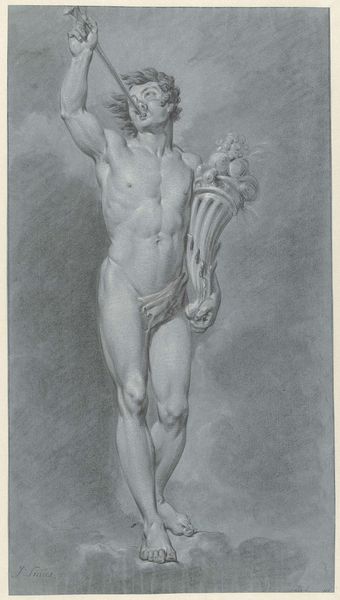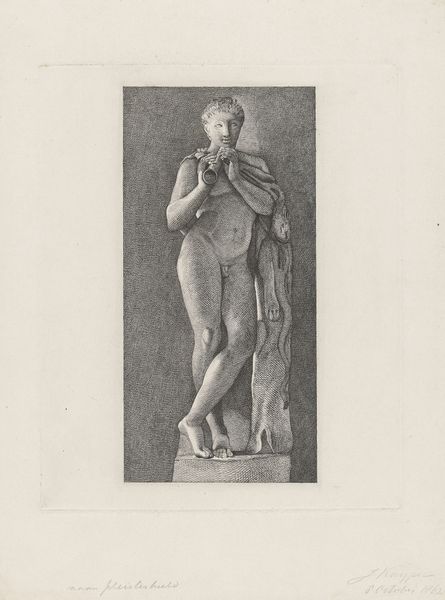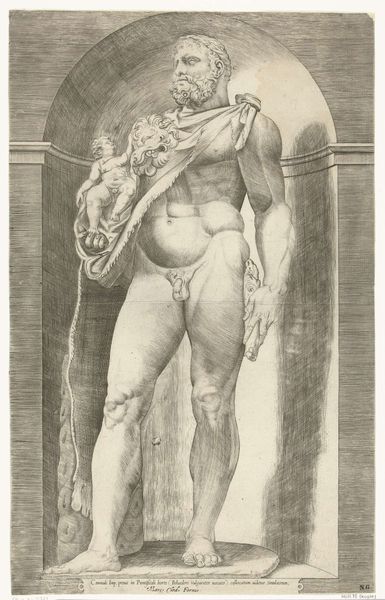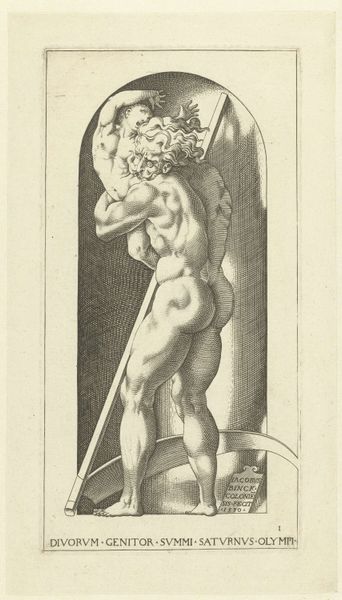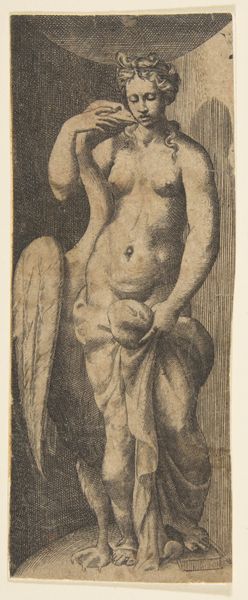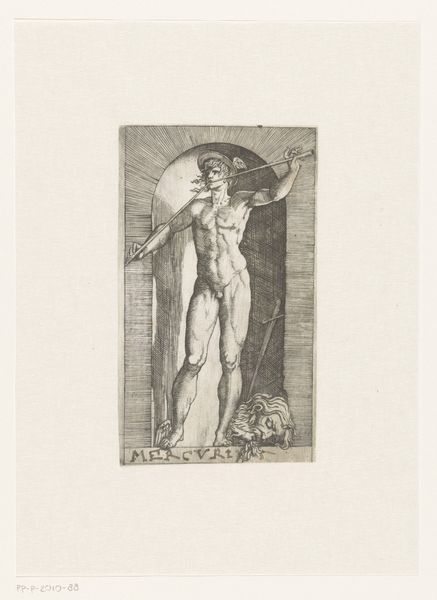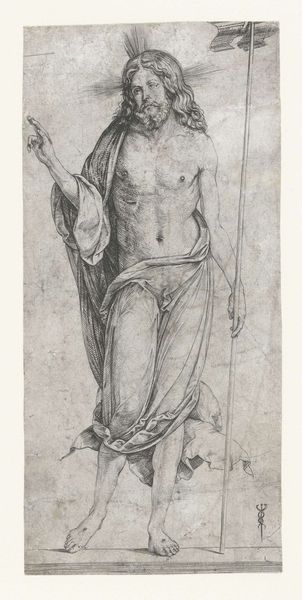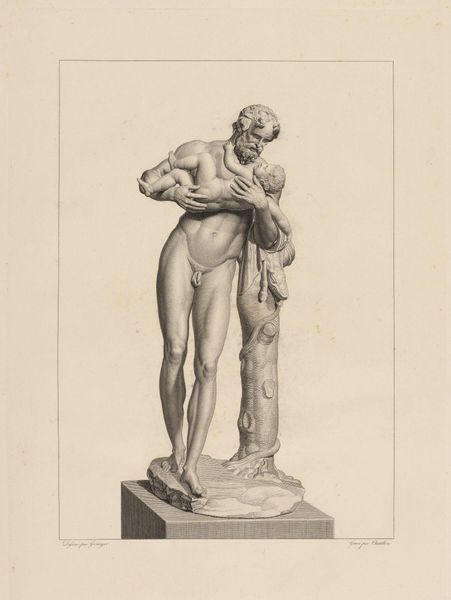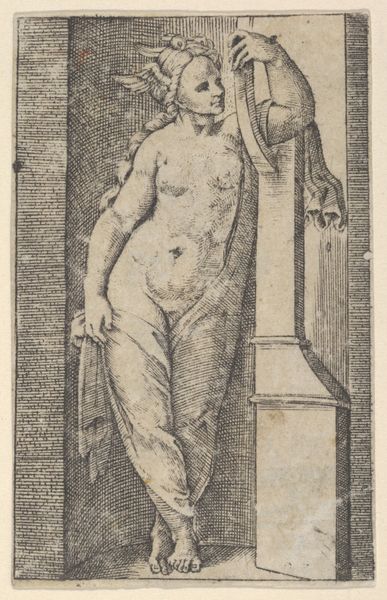
drawing, sculpture, pencil, graphite, engraving
#
pencil drawn
#
drawing
#
neoclassicism
#
pencil sketch
#
charcoal drawing
#
figuration
#
pencil drawing
#
sculpture
#
pencil
#
graphite
#
pencil work
#
academic-art
#
nude
#
engraving
Dimensions: height 409 mm, width 172 mm
Copyright: Rijks Museum: Open Domain
Curator: Here we have George Andries Karsen’s "Herdersknaap", a drawing from 1860 executed in graphite and pencil. Editor: It has an imposing presence for a work on paper. The muscularity of the figure, set against that meticulously rendered background, feels almost monumental, like a preliminary sketch for a grand sculpture. Curator: Indeed. Karsen was working in the Neoclassical tradition, looking back to idealized forms and narratives. The "Herdersknaap," or shepherd boy, as it translates, immediately calls up associations of Arcadian landscapes and youthful innocence, recalling the artistic styles of the antique world and ancient Greece, echoing concepts such as youthful virtue and an ideal, untainted past. Editor: Yet, there’s a tension here. The exposed musculature, the stark rendering of his nudity. It feels less about pastoral innocence and more about potent masculinity—even dominance, signaled through his pose, an arm raised behind his head as he leans casually, proprietorially, on the stylized support. There’s a confidence conveyed through line and shadow. Curator: That confidence could certainly speak to a prevailing social ideology of the time. Consider also the inherent cultural memory of the nude in Western art. This echoes centuries of artistic practice. We could consider how representations of the nude male body connect to power structures in different historical contexts. In some societies, these representations were about beauty and idealisation of male prowess and power, and virility. In other moments in history this connection to masculine authority, strength and social power, and of dominance have come under considerable scrutiny. Editor: Yes, the historical context undoubtedly frames our interpretation. Thinking purely formally though, note how the artist orchestrates the use of hatching and cross-hatching to build volume and create nuanced tonal shifts. The graphic impact itself, detached from the layers of potential meanings we may project, holds a particular aesthetic appeal. Curator: So, the form provides both an echo and a subversion. It holds those symbols and the memory while challenging their context. Editor: Precisely. I find it’s that intrinsic formal complexity, that very dance between line and shadow, volume and void, which invites further interpretation. Curator: It makes one consider the intersection of style, and interpretation within a moment. Editor: An engaging conversation indeed stemming from just graphite on paper!
Comments
No comments
Be the first to comment and join the conversation on the ultimate creative platform.
